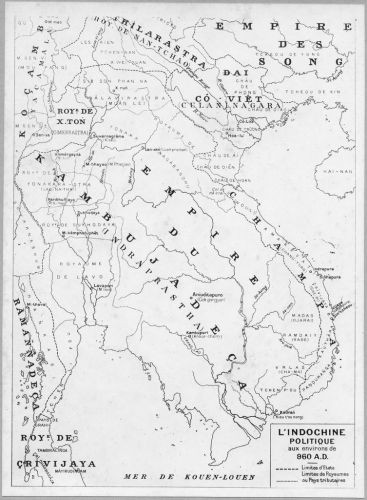
MASPERO Henri (EN)
Biographical Article
Henri Maspero pursued studies in history and geography and completed a dissertation entitled Les Finances de l'Egypte sous les Lagides (1905), a degree in law, and studies in Chinese at the École des langues orientales. He turned away from the path in Egyptology charted by his father Gaston Maspero (1846-1916) in preference for Chinese and Vietnamese studies, and accepted the fellowship offered to him by the French School of Asian Studies (l’École française d’Extrême-Orient, or EFEO), in 1908. He thus followed the footsteps of his half-brother, Georges Maspero (1872-1942), a civil services administrator and corresponding member of the EFEO in 1903, into Indochina. He was later appointed professor of Chinese and replaced Paul Pelliot (1878-1945) in 1911. He remained in this position until 1920, when he took up his post at the Collège de France as the chair of Chinese language and literature, which had been vacant since the death of Édouard Chavannes (1865-1918). Henri Maspero took advantage of his posting in Vietnam to complete his knowledge of Vietnamese and sinological matters. His documentation, which then enriched the Vietnamese collection of the school's library, and later that of the Asian Society to which he bequeathed his library, is made up of numerous field investigations, old works, and prints collected during various assignments. In the field of linguistics, he deserves credit for establishing a method of comparative analysis of the Thai, Chinese, and Vietnamese languages, a method previously perfected, but not yet adopted for the study East Asian languages. It applies a typological and synchronic analysis, which indicates the influence of the means of expression on the ways of thinking and reasoning. From this perspective, he demonstrated the existence of dialectal distinctions in ancient Chinese for the first time (the dialect of Ch'ang-ngan under the T'ang, 1921) and drew attention to the history of vernacular Chinese and the characteristics differentiating it from the literary language, with consideration for the study of local dialects. From a historical point of view, he methodically studied the Vietnamese and Chinese sources he collected, in order to liberate these countries’ histories from the myths and legends previously associated with them. The study of Thai societies living remotely in the mountains reveals analogies with China. Taoism and Buddhism, which are intimately linked in China, are also among the subjects he discussed once in France. In particular, he embarked on reading Taoic texts and deciphering technical terms, from which he drew material for his courses and articles. La Chine antique, undoubtedly his most important work, appeared in 1927. Henri Maspero defined the geographical and human conditions of high antiquity, reconstructed legendary traditions, tackled questions of chronology, and extended his research to philosophy and to religious poetry. He then oriented his work towards the history of the economy, society and religions, from around 200 BC to around 600.

The Collection
A collection of 265 Thai manuscripts was likely collected and brought back primarily by Henri Maspero. These were generally made by copyists from existing manuscripts and loaned between relatives and friends. Neither the names of the authors of the original texts nor those of the copyists are noted. Most of the original texts are now untraceable. The collection is divided into four groups: the Thai Dam (T'aï dam) and Thaï Don (T'aï Don) manuscripts from the provinces of Sơn La, Lai Châu, Phong Thổ and Nghĩa Lộ; the Thai Deng (T'ai Deng) from the Thanh-Hoa and Nghệ An provinces; the Thai Muong from Hoa-Binh province; and the Thai Neua from the provinces of Haut-Mekong and Sam-Neua.

Related articles
Collection / collection d'une personne

Personne / personne

